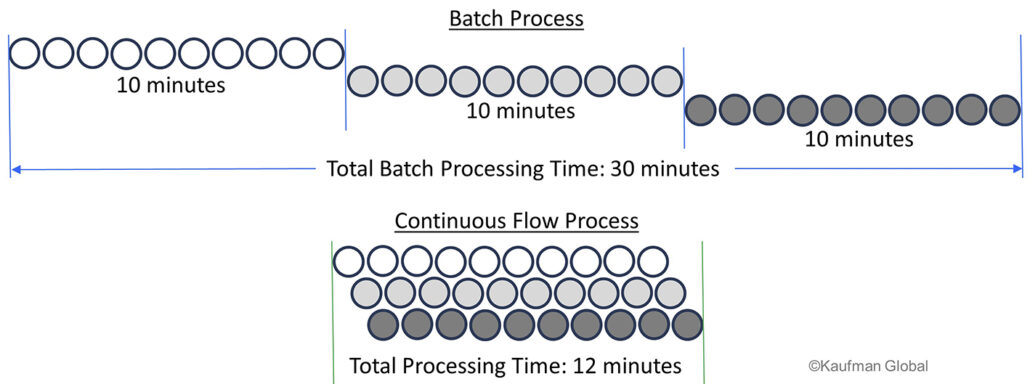Continuous Flow
Continuous Flow is a way of connecting operations so that all incremental quantities of production – from 1 unit (discrete) to n+1 units (batch) move through production in a steady stream. It strives to flow products and information through production in a level manner by linking and synchronizing tasks, processes and operations. The objective if Continuous Flow is to achieve maximum utilization of assets: equipment, labor and material.
Continuous Flow Minimizes Waste
Continuous flow focuses on minimizing, or eliminating Work In Process (WIP) and travel distance. Eliminating these disruptions leads to the ideal “flow” and minimizes waste. It increases and stabilize the rate of product flow to:
- Reduce total lead time, and
- Make the production cycle more predictable while maintaining top quality.
In a continuous flow environment, Work-In-Process is minimized because only the material needed for production flowing through the process. Therefore, inventory is minimized.

“One-piece flow” is not synonymous with continuous flow. While on-piece flow is desirable in certain types of discrete manufacturing, it is not always the best solution when processing batches of production components is required. In Lean environments, logical decisions must be made about the least wasteful approach to doing everything. If we get too hung up on “one-piece”, we might actually be introducing waste into the system.
« Back to Glossary Index